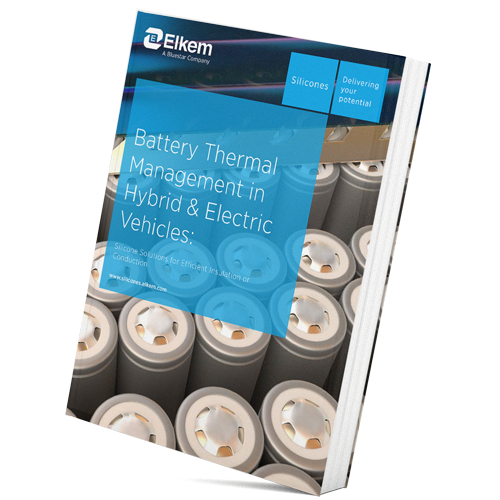- Scale-up your battery pack design with silicone thermal management materials
Scale-up your battery pack design with silicone thermal management materials
In this article, we will try to answer the question: why does thermal management materials processing performances (processability, pot life, curing speed) matter that much for battery pack scale-up? By giving you some insights on the EV industrialization challenges and some specificities related to battery pack production and processing of thermal management materials.
The best EV car design wouldn’t be okay if it is not scalable. With the production of those vehicles doubling every year, the pressure is on the engineering teams to design more competitive products, always more optimized for serial production at high scale.
As we’ve been detailing in our previous articles, the battery pack is the core organ of the whole electric car. Carmakers are giving special attention to its design, and specifically the way it will withstand extreme conditions such as overheating of battery cells, thermal runaway, thermal shock…etc. to guarantee an absolute performance for the driver and 200% of safety to its passengers. To meet these goals, thermal management systems are put in place, including thermal management materials whether playing the role of thermal insulation or thermal conduction.
In our specialized eBook covering the question of Thermal Management Materials, we’ve highlighted the superiority of silicones to help engineers control the heat of EV battery packs. But still, one question remains: Is battery pack scale-up possible with silicones for thermal management?
How easily are silicones integrated into EV processing systems?
Silicones present major advantages for scaling-up battery pack production. For example, their flowability is a major benefit in automated processing compared to other materials, in particular polyurethanes. Also, silicones can be formulated in a wide range of forms and can be customized to variable pot life and curing times at given temperatures, to fit into existing or future processing systems. This flexibility and capacity to adapt is a major advantage for processing specialists, as they have told us now for many years in traditional automotive assembly, and is even a greater leveraging factor in EV manufacturing.
Mastering the art of pot life
Pot life is defined as the amount of time it takes for an initially mixed viscosity to double, or quadruple for lower viscosity products (<1000 cPs). Timing starts from the moment the product is mixed and is measured at room temperature (23˚C). This technical metrics is first and foremost the key aspect to measure and optimize for battery pack design scale-up. Indeed, your thermal management materials need to be flowable enough to be dispensed easily by automated machines. On the other hand, it needs to cure very quickly for the battery pack to be passed to the next step of the production line. There is a tough tradeoff do setup here, taking into account:
- The viscosity of your thermal management material
- The capacities of your dispensing machines
- The curing time of your thermal management material
- The speed requirements of your production line
Knowing that you can easily assume that there’s not one single pot life fitting every EV carmakers, but dozens of possibilities as each project is very unique. Mastering the art of pot life isn’t an exact science so the best way to do it is to partner with silicone manufacturers having a certain sense of personal touch. Elkem Silicones is one of the world leaders in silicone manufacturing, having full integration of the value chain. Our DNA is to create unique solutions, specially designed for your unique project. A good starting point would be to read at our brochure. And eventually contacting us to frame your needs and define a direction to take.
